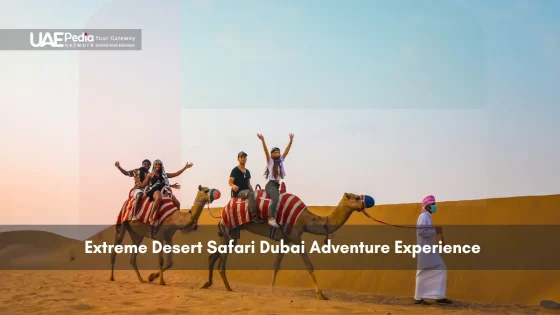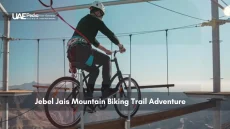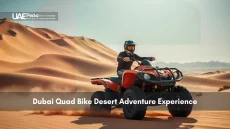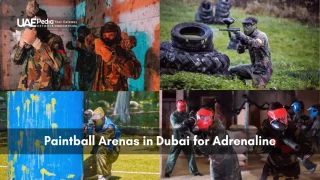What if the desert’s most thrilling secrets weren’t buried in sand, but etched into stone? The Emirates’ vertical landscapes surprise even seasoned adventurers—limestone crags glow golden at dawn, while hidden canyons test balance and grit. This isn’t just about elevation—it’s a dance with geology and history.
Local pioneers spent decades mapping routes through these formations, creating a legacy as enduring as the rock itself. Their chalk marks now guide climbers to overhangs shaped by millennia of wind, where every handhold tells a story. Modern guidebooks and apps make these treasures accessible, but the raw challenge remains untamed.
Whether you’re tying in for your first lead or scouting new projects, the region offers something rare: adventure steeped in cultural awareness. You’ll find beta on everything from gear-friendly wadis to summit vistas overlooking date palm oases. And yes—we’ve packed this page with photos that’ll have you lacing your shoes before the final paragraph.
- Vertical playgrounds: Discover formations blending technical climbs with cinematic views
- Local wisdom: Learn how early climbers shaped today’s thriving scene
- Smart prep: Access updated beta through trusted apps and community insights
Introduction to the UAE Climbing Experience
Every handhold here tells two stories: one of earth’s history, another of human passion. You’ll find more than desert panoramas—these crags host a mosaic of challenges shaped by wind, time, and dedicated route-setters.
Why Climb Here?
The region offers three-dimensional variety. Limestone walls serve up technical face climbs, while sandstone boulders test problem-solving skills. Over 200 documented paths range from beginner-friendly slabs to burly overhangs—all within 90 minutes of major cities.
| Style | Features | Top Area |
|---|---|---|
| Trad | Adventure-packed placements | Hajar Range |
| Sport | Bolt-protected endurance | Wadi Adventure |
| Bouldering | Short power moves | Al Ain Oasis |
Culture Carved in Chalk
Local enthusiasts transformed obscure outcrops into world-class playgrounds. “We built this for everyone,” shares a pioneer who established 14 routes in 2018 alone. Today’s scene thrives on shared beta and post-climb karak chai sessions.
Newcomers get VIP treatment. Regional websites like ClimbUAE.ae update route conditions weekly, while the UAE Vertical Guidebook details 120+ paths with approach times. Our pro tip? Check the community page every Tuesday—that’s when crews post weekend meetups.
Planning Your Climb: Routes, Timeline, and Preparation
When the sun dips below razor-edged ridges, your project begins. Modern climbers face a delicious dilemma: chase iconic lines polished by decades of ascents or pioneer fresh stone? The answer lies in smart prep—and knowing where to look.
Route Recon Made Simple
Classic paths glow like neon in guidebooks—think The Tower Traverse or Golden Pillar. But newer challenges hide in plain sight. Apps like VertiQuest overlay GPS tracks onto satellite images, revealing beta even locals debate. One route-setter laughs: “Our secret test-piece last year? Now it’s on every ‘must-do’ page.”
Time + Tenacity = Success
Some climbs demand weeks of finger-taping effort. Others reward weekend warriors. Pro tip: Block 3-5 days for multi-pitch adventures. For bouldering marathons? Two months of campus board sessions might save your skin—and sanity.
Endurance isn’t just physical. Practice visualization: study route photos while sipping karak chai. Local forums share psyche-building mantras—”Breathe like the wind shaped these walls”—that stick when your forearms scream.
Final move? Sync your plan with the United Arab Emirates Vertical Almanac. Its color-coded maps and community-sourced info turn “someday” dreams into next-weekend sends. Because here, every chalk bag holds equal parts strategy and stoke.
Rock Climbing in UAE Mountains: Safety Tips and Essential Gear
Your harness buckle clicks—a sound that means business in these sun-baked crags. Out here, gear isn’t just equipment—it’s your lifeline. Let’s talk about what stays in your pack and what stays top of mind.
Must-Have Equipment for the Climb
Sixty-meter ropes rule here. Why? Many sport routes stretch longer than gym walls suggest. Pair them with 12+ quickdraws for sustained vertical sections. Trad enthusiasts swear by cams and nuts sized for limestone cracks—test them on lower-grade routes first.
Desert heat demands extras: electrolyte tabs, UV-resistant slings, and a second water bottle. One route developer puts it bluntly: “Your gear’s only as good as your hydration.”
Managing Risks in Harsh Conditions
Check weather apps religiously. Sandstorms can roll in faster than you’ll top-rope a 5.10. Lower-off anchors? Double-check every carabiner—sun exposure weakens metal over time.
Local forums post real-time route updates. Bookmark trusted guides like Vertical Horizons UAE for beta on loose rock zones. Better yet: recruit partners who’ve navigated these walls in summer’s peak.
“Climb smart, not just hard. The mountain isn’t going anywhere.”
- Pre-climb ritual: inspect ropes for frays
- Pack a satellite communicator (no signal zones exist)
- Study descent paths before ascending
Mastering Techniques and Adapting to Unique Rock Conditions
Ever tried pulling a delicate move on rock that crumbles like feta cheese? The Emirates’ limestone demands respect—and a recalibrated approach. Its textured surfaces range from glass-smooth to jagged honeycombs, shaped by ancient seabeds and desert winds. Trust us: your gym-honed crimps won’t cut it here.
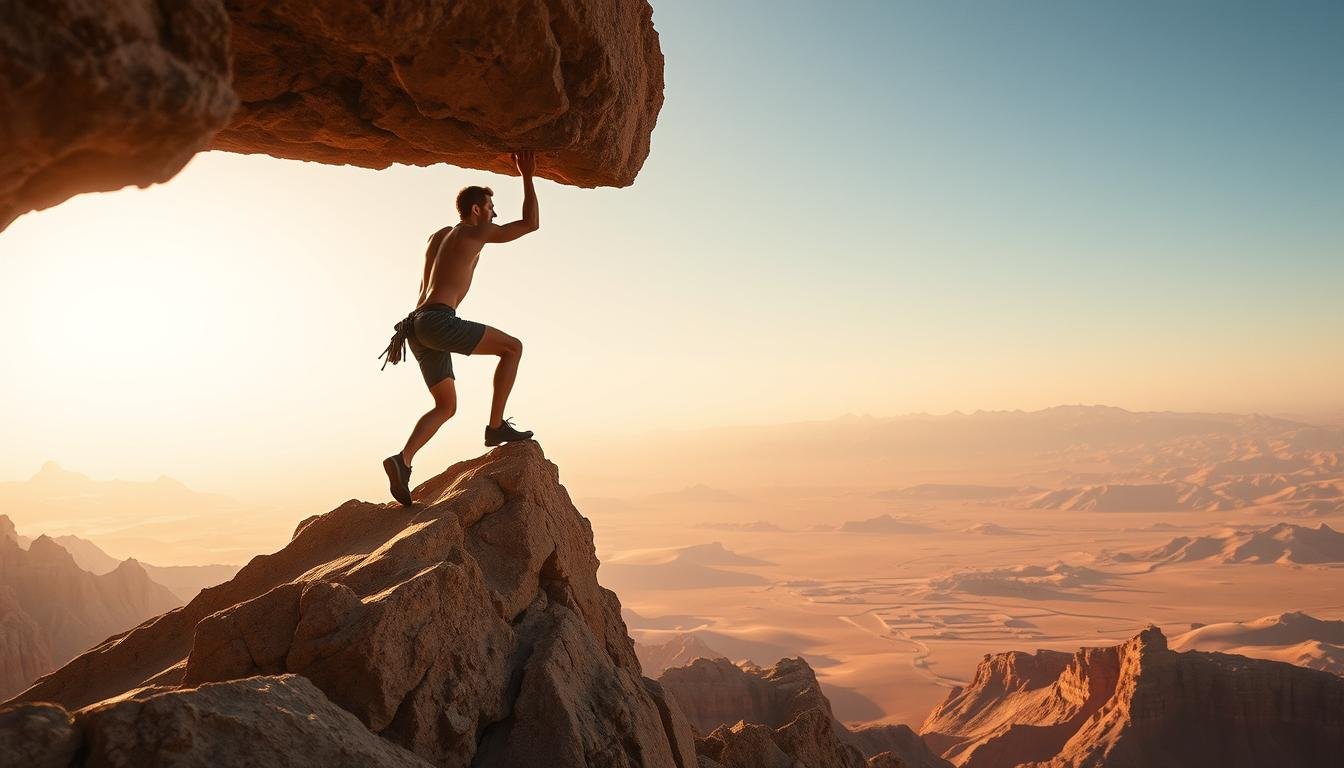
Understanding the Limestone and Surface Variations
Local limestone behaves like a moody collaborator. On routes like Diamond Ridge, pockets form perfect thumb catches. But nearby, the same rock might fracture under heavy hands. Pioneers learned this the hard way—early ascents on Sandstone Symphony required gentle footwork to avoid breaking holds.
Pro tip: Brush holds thoroughly. Dust from frequent sandstorms creates a deceptive layer. One route developer jokes, “It’s nature’s way of adding a ‘hard mode’ setting.”
Techniques for Trad, Sport, and Bouldering Routes
Trad climbers favor offset cams for flaring cracks, while sport enthusiasts practice clip-and-go efficiency on overhung walls. Bouldering here? Think explosive power meets puzzle-solving. The Alabaster Traverse tests heel hooks on sloping edges, demanding beta that changes with the light.
“Every style has its dialect,” notes a guide who’s logged 200+ sends. “Sport routes whisper ‘endurance,’ trad screams ‘patience,’ and bouldering… well, it laughs at your pain tolerance.”
Newcomers thrive by studying detailed photos and beta from apps like VertiQuest. Because here, adapting isn’t optional—it’s how you unlock the full experience.
Exploring Local Climbing Gyms and Outdoor Community Resources
Urban adventurers find their tribe where rubber meets resin. The Emirates’ indoor training hubs blend cutting-edge walls with social energy—perfect for honing skills between desert excursions.
Indoor Gyms: Opportunities in Dubai and Abu Dhabi
Mountain Extreme’s 15-meter lead walls test endurance, while Rock Republic’s Moonboard grid sharpens precision. The Wall Climbing Gym in Abu Dhabi mixes auto-belay zones with techy boulder problems. These spaces do more than train fingers—they’re where weekend warriors swap beta over protein shakes.
Connecting with Climbing Communities and Guides
Local Facebook groups buzz with partner requests and event alerts. “Our Thursday night meetups turn strangers into rope teams,” says a Dubai gym manager. Pro tip: Bookmark the Vertical Emirates page for updated clinic schedules and gear swaps.
Indoor sessions build outdoor confidence. Controlled environments let you drill heel hooks or practice dynos without desert heat. Later, apply those skills on real stone—with less sweat and more style.
- Join WhatsApp groups for last-minute crag carpooling
- Attend monthly “Send Sessions” to meet certified guides
- Check gym bulletin boards for seasonal discounts
Overcoming Navigation, Weather, and Access Challenges
Lost? Not here—where paper maps meet digital savvy to unlock remote routes. Desert roads shift like dunes, and cell signals vanish faster than shade at noon. But with the right tools, you’ll turn “Where’s the trail?” into “Let’s crush this line.”
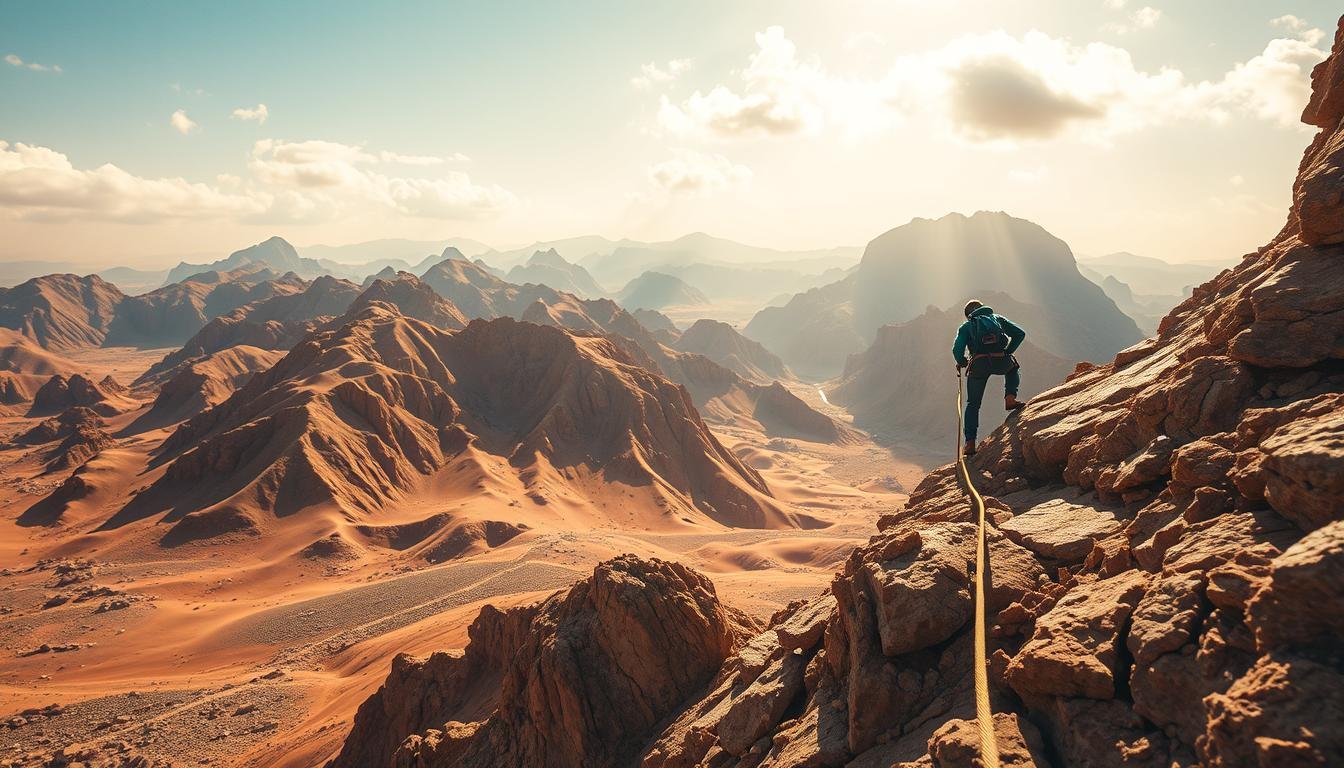
Utilizing Maps, GPS, and Local Insights
Handheld GPS devices outperform phones when towers disappear. Download offline maps for areas like Wadi Shawka—roads here change after flash floods. Local forums share coordinates for hidden parking spots, often marked by stacked rocks or faded spray-paint arrows.
| Tool | Best Use | Pro Tip |
|---|---|---|
| Handheld GPS | Deep desert access | Update firmware monthly |
| Offline Maps | Backup navigation | Mark water sources |
| Community Forums | Real-time updates | Check posts from last 72 hours |
One guide laughs: “Google Maps once sent climbers to a goat farm. We fixed that—now our side notes include ‘third cactus turn left.’” Trust local beta over generic apps.
Staying Safe in Extreme Temperatures and Changing Conditions
Heat turns limestone into a griddle—test holds cautiously. Sudden rain? Shelve your project. Flash floods transform dry wadis into raging rivers in minutes.
“Watch the sky more than your watch. If clouds gather, retreat—you can’t outclimb water.”
Pack electrolyte tablets and UV sleeves. Avoid midday ascents—start at dawn or aim for shaded side walls. Check weather apps hourly; sandstorms reduce visibility to zero faster than you’ll top-rope a 5.8.
Flexibility saves trips. When routes flood, switch to nearby boulders. Got intel on a closed side road? Local WhatsApp groups blast updates faster than official sources. Because here, adaptability isn’t just smart—it’s survival.
Final Reflections on Reaching New Heights in the UAE Mountains
Every ascent here writes its own epilogue—a blend of grit, preparation, and awe. The region’s vertical puzzles demand more than strength; they require cultural curiosity and respect for ancient stone. Whether tackling sun-warmed routes or decoding beta from local legends, success hinges on merging modern tools with timeless wisdom.
Smart planning transforms summer’s heat from foe to ally. Trusted guides and apps like VertiQuest become lifelines, while quality gear ensures you’re battling cliffs—not equipment. Remember: those golden dawn starts aren’t just for cooler temps. They’re stolen moments when the land whispers its secrets to early risers.
The United Arab Emirates rewards those who listen. Its crags teach patience through technical slabs and humility on overhangs. For those hungry to dive deeper, resources like preparing for vertical challenges offer expanded insights. But the true magic? It lives in shared stories—post-climb tales traded over karak chai, where “next time” plans take shape.
Pack your chalk bag, double-check that harness, and let the mountains surprise you. Adventure here isn’t just about summits—it’s about the legacy you join with every upward move.
Aim for October to April when temperatures dip below 30°C (86°F). Summer months (May-September) bring extreme heat—stick to shaded wadis or air-conditioned gyms like Clip ‘n Climb Dubai. Always check weather apps like Windy for sandstorm alerts!
Absolutely! Operators like Adventurati Outdoor offer intro courses in Jebel Hafeet or Hatta. Groups like Dubai Rock Climbing Crew host meetups—follow their Instagram for events. Indoor gyms like Rock Republic Abu Dhabi also train newbies before hitting real rock.
A> Yes—pack durable shoes with sticky rubber (La Sportiva Miuras work well) and a 70m rope for longer routes. Chalk bags help with sweaty palms. For trad climbs, bring offset cams for flared cracks. Local shops like Adventure HQ stock region-specific kits.
A> Download offline maps via apps like Gaia GPS and join WhatsApp groups like UAE Climbers for beta. Look for painted dots marking routes—yellow for moderate, red for advanced. Hire a guide if tackling RAK’s "Magic Mountain" for the first time!
A> Fujairah’s Dibba area has granite blocks with crash pad-friendly landings. In Dubai, Al Qurayn Hills offers quick sessions 45 minutes from downtown. For indoor variety, The Block Sharjah sets fresh problems weekly. Pro tip: avoid midday sun—start at dawn!
A> Dress modestly near villages—opt for longer shorts/base layers. Avoid Fridays (main prayer day) for popular crags. Pack out ALL trash (even orange peels—they harm desert ecosystems). Smile and greet locals with "Marhaba"—you’ll often get fresh dates as trail snacks!



